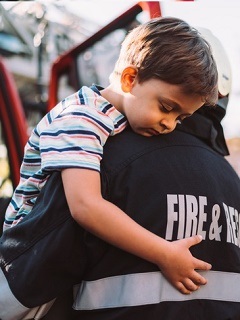Is Your Home at Risk for Carbon Monoxide?
By Caitlin Bootsma
"Where there's smoke, there's fire," is a saying for a reason. That is, smoke and/or heat are indicators that there could be a fire and a signal to get to safety quickly. Carbon monoxide, however, is known by some as the "invisible killer" because there are not warning signs. You cannot taste it, see it, or smell it, but it can cause headaches, nausea, dizziness and even death.
Carbon monoxide is generated when fuel-burning appliances don't burn all the fuel they need to function. Examples include grills, clothes dryers, cars, generators, and more.
Thousands of kids are exposed to carbon monoxide each year and suffer its ill effects. Safekids.org however, has some tips to avoid carbon monoxide poisoning in your home—especially as many of us are spending more time indoors:
- Install carbon monoxide alarms on every level of your house.
- Test the alarms every month.
- Avoid using gas in your home. Use grills outside (and close the windows) and warm up cars away from the house (and garage).
If the alarm does go off, follow a similar protocol to a fire alarm and get outside to a safe place away from the poison and then call for help.
This article is the copyrighted property of National Catholic Services, LLC. All rights reserved. To provide constructive feedback, or request permission to redistribute, please communicate with: editor@virtus.org
This article is not part of your continuing training. To access your required bulletins you must log in using the form in the upper left-hand corner of the screen. Then go to the TRAINING tab.



